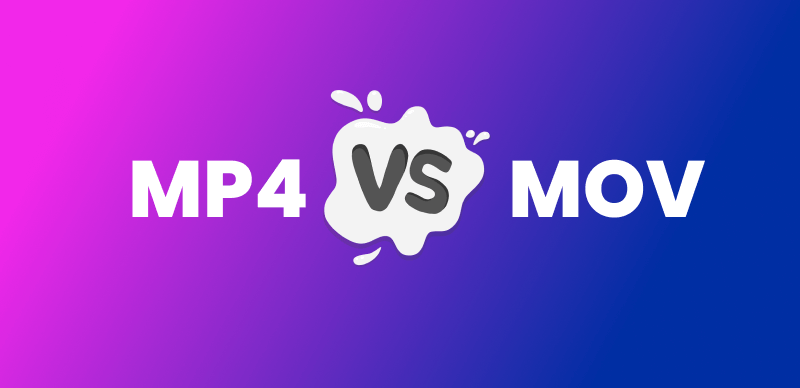Ever wanted to share a video on Facebook but found the file size too large? Maybe you’ve been disappointed by poor video quality after uploading. This common problem has a straightforward solution: compress video for Facebook. Video compression allows you to reduce the file size and maintain the quality of your video. In this guide, we’ll explain how to compress videos, particularly focusing on preparing them for Facebook.

How to Compress Videos for Facebook
Understanding and applying video compression is a technical challenge. But don’t worry! We’ve made it easier for you. We’ve covered you by introducing user-friendly tools like HandBrake for Windows and Mac users and FreeConvert for online compression. Follow along, and by the end, you’ll be compressing videos like a pro, ready to share your moments with friends and family on Facebook.
Also read: Compress Video for Instagram >
Table of Contents: hide
Facebook Video Upload Requirements
Compress Video for Facebook on Windows and Mac
Compress Video for Facebook Online
Facebook Video Upload Requirements
When it comes to sharing your videos on Facebook, there are some essential requirements you’ll need to follow. These specifications ensure your video looks and sounds its best, reaching your audience effectively.
Duration: If you want to keep your audience engaged, aim for shorter videos. Ideally, aim for 2-3 minutes.
File Size: Regarding file size, Facebook has a maximum limit of 4.0 GB. If your video exceeds this limit, you must compress it before uploading.
Video Resolution: It’s best to upload high-quality videos in high definition (HD). Aim for a resolution of 720p or 1080p for the best results.
Aspect Ratios: Facebook supports various aspect ratios, accommodating vertical and horizontal videos. The accepted range is anywhere between 9:16 to 16:9, so you can choose the aspect ratio that suits your content.
Video Format: AVI, WMV, and FLV are compatible formats, but if you want the perfect balance between quality and file size, MP4 is the way to go.
Frame Rate: When it comes to frame rate, keep it below 30 frames per second (fps) for optimal video playback.
Audio: Your video’s audio should be in Stereo AAC audio compression at 128kbps+.
Also Read: How to Record Messenger Video Call on Facebook >
Compress Video for Facebook on Windows and Mac
HandBrake is a versatile piece of software that initially found its niche as a DVD-ripping tool. With time, updates, and evolution, HandBrake’s feature set expanded and now includes hardware acceleration, transcoding, and batch encoding capabilities. These functionalities make HandBrake a handy tool for tasks beyond its original design, including video compression for platforms like Facebook.
Nowadays, users leverage HandBrake to manage video file sizes effectively without significant losses in quality. If you’re new to this, here’s a simple guide on how to compress your video using HandBrake:
Step 1: Start by downloading HandBrake software onto your system. Once installed, launch the program.
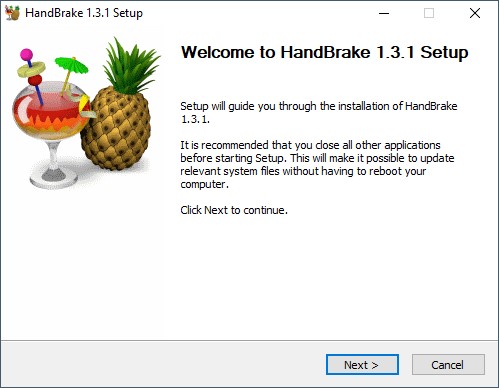
Launch HandBrake
Step 2: Click the ‘Source’ icon to load your video file on the main interface. This action will open a browser window. Navigate to your video file, click on it, then select ‘Open.’ HandBrake offers custom presets, which can vary across different operating systems. Consider where you intend to play the video and select the appropriate preset.
Click The Source Icon
Step 3: Click the ‘Browse’ button after loading the file. Here you can change the destination of the compressed file — where it will be saved post-compression.
Step 4: Select the desired format for your video file from the Format option. HandBrake primarily supports MP4 and MKV formats. Keep in mind where you want your video to play. For example, choose ‘Web Optimized’ if the video is for online sharing.
Step 5: In the same window, configure the video codec, and select the high-profile preset, frame rate, and average bitrate. These options will help you further reduce the file size. You can also alter the video’s aspect ratio here.
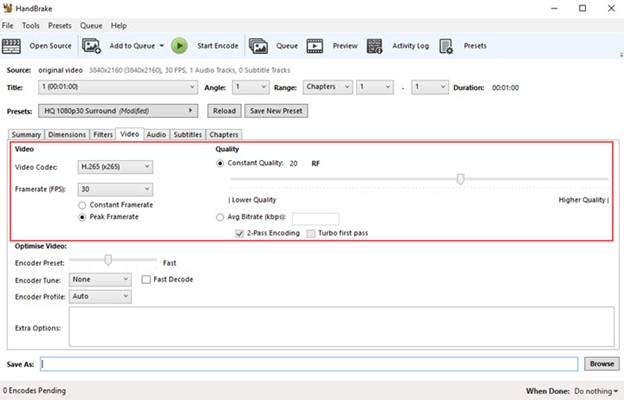
Configure Video Codec
Step 6: Once all your preferences are set, hit the ‘Start’ button. HandBrake will now compress your video. Wait for the process to complete.
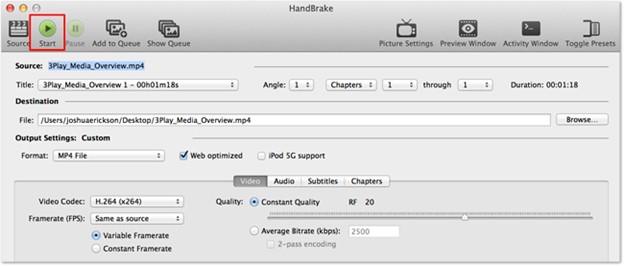
Hit the Start Button
Compress Video for Facebook Online
When it comes to compressing videos for Facebook without the need for additional software, online tools like FreeConvert come in handy. This easy-to-use online video compressor allows you to reduce video sizes perfectly for Facebook and is compatible with all operating systems.
Despite its convenience, it’s worth noting that online compressors do have their limitations. For instance, they have a cap on the file size you can upload, making them unsuitable for compressing exceptionally large videos. Certain online video compressors might also monetize your video files and system data.
However, FreeConvert stands out as a reputable and reliable service. It enables you to upload files up to 1GB in size during the free trial and offers two distinct compression methods. The smart mode lets beginners adjust the target video size as a percentage of the original size. Alternatively, the expert mode gives you greater control, allowing you to tweak codec, bitrate, and resolution to optimize the video size.
Step 1: Launch the web browser and go to the FreeConvert Video Compressor’s website.
Step 2: Hit the ‘Choose Files’ button and pick the video you want to compress from your computer’s storage, a web link, or an internet storage service.
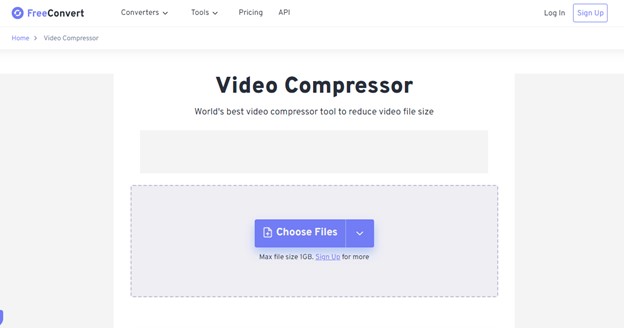
Hit Choose Files
Step 3: Look for the wheel-shaped icon on the screen and the settings button. Click on it to set a target file size for your Facebook video. Once you’ve done this, hit ‘Apply Settings’ to confirm the changes and then select ‘Compress Now.’
Step 4: Once the compression process is fully executed, which may take a short time depending on the size of your video, press ‘Download.’ This will let you store the Facebook video on your device.
Bonus Tip – How to Boost Engagement on Your Facebook Videos
If you’re looking to expand the reach of your Facebook videos and drive more views, adding eye-catching captions can be a game-changer. CapUp, an AI-powered caption generation tool, makes this process a breeze. It offers a selection of ready-to-use social media caption templates that can instantly add dynamic, multimedia-enhanced captions to your videos – complete with emojis, sound effects, and eye-catching motion graphics.
Step to auto-generate captions use CapUp:
Step 1: Log in to CapUp and directly drag and drop or upload your video from your computer.
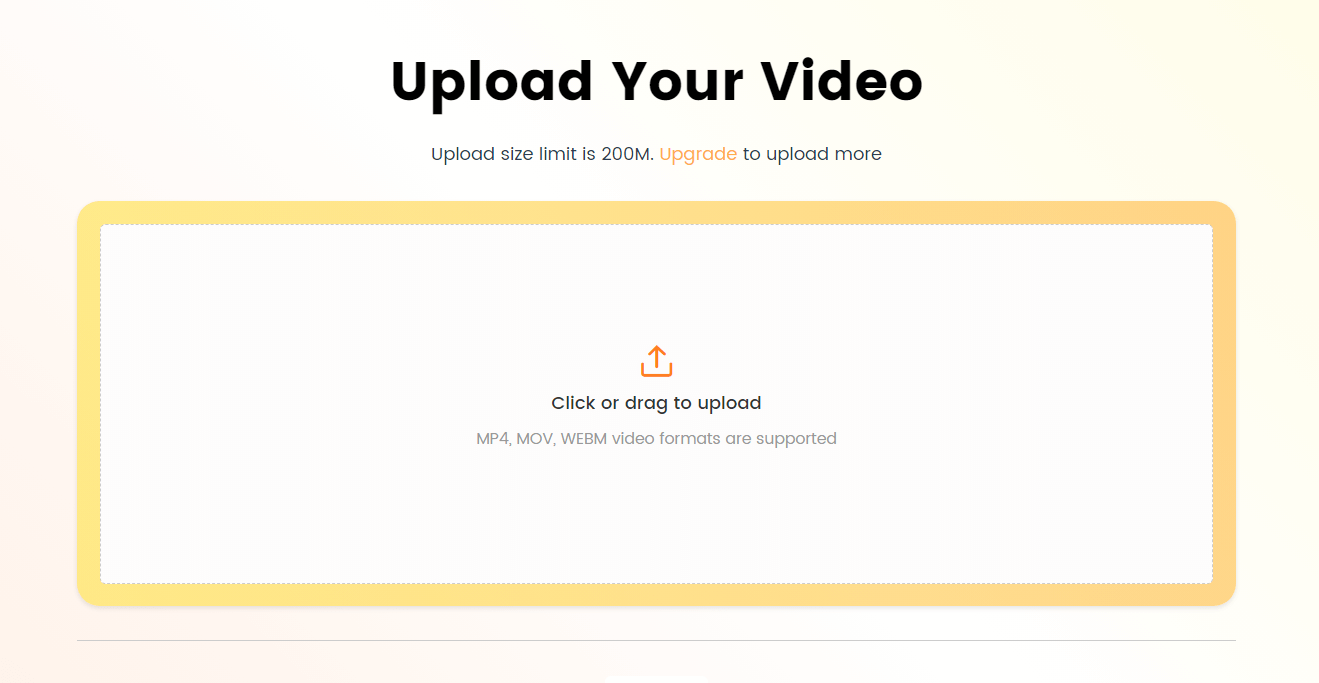
CapUp Interface – Upload The Video
Step 2: Click on the drop-down menu to select the language of the uploaded video. CapUp supports English, German, Spanish, French, Portuguese, and 12 other languages.

CapUp – Select the Languages
Step 3: Click on “Templates” and choose from various top influencer templates. Adjust the corresponding parameters, such as font, sound effects, emojis, etc., according to your needs. Once done, click on “Save as Template.” to save the default template as your custom template.
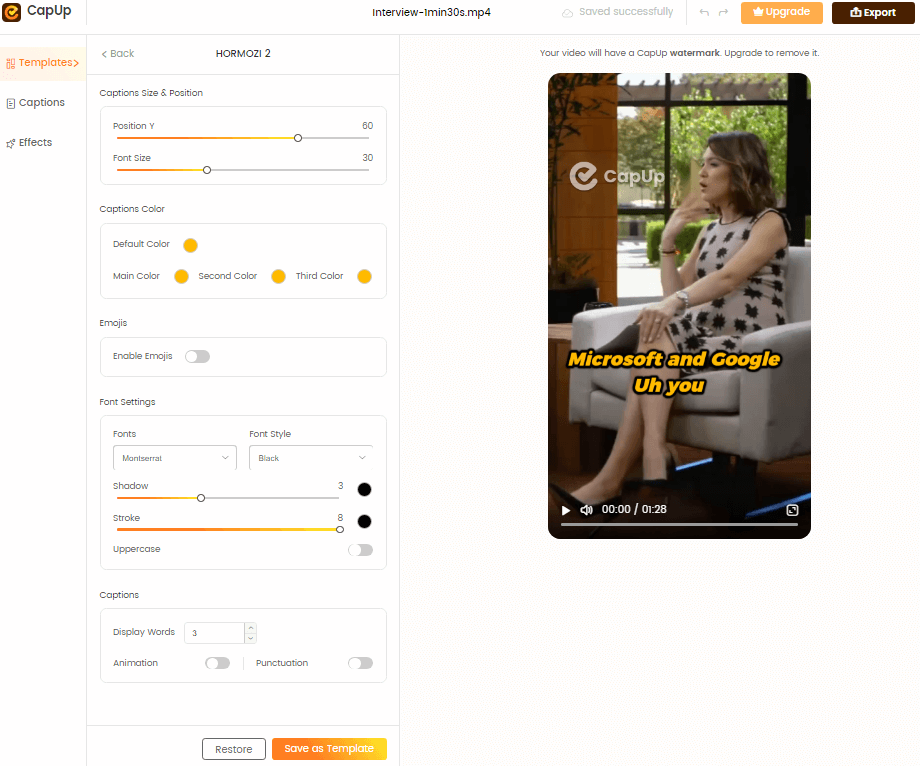
CapUp – Customize the Default Template
Step 4: Wait for a moment, and CapUp will automatically generate eye-catching Facebook reel captions for you.
Step 5: Next, you can customize your captions by clicking on “Titles” and “Effects” to personalize the font, emojis, sound effects, and animations for your titles.
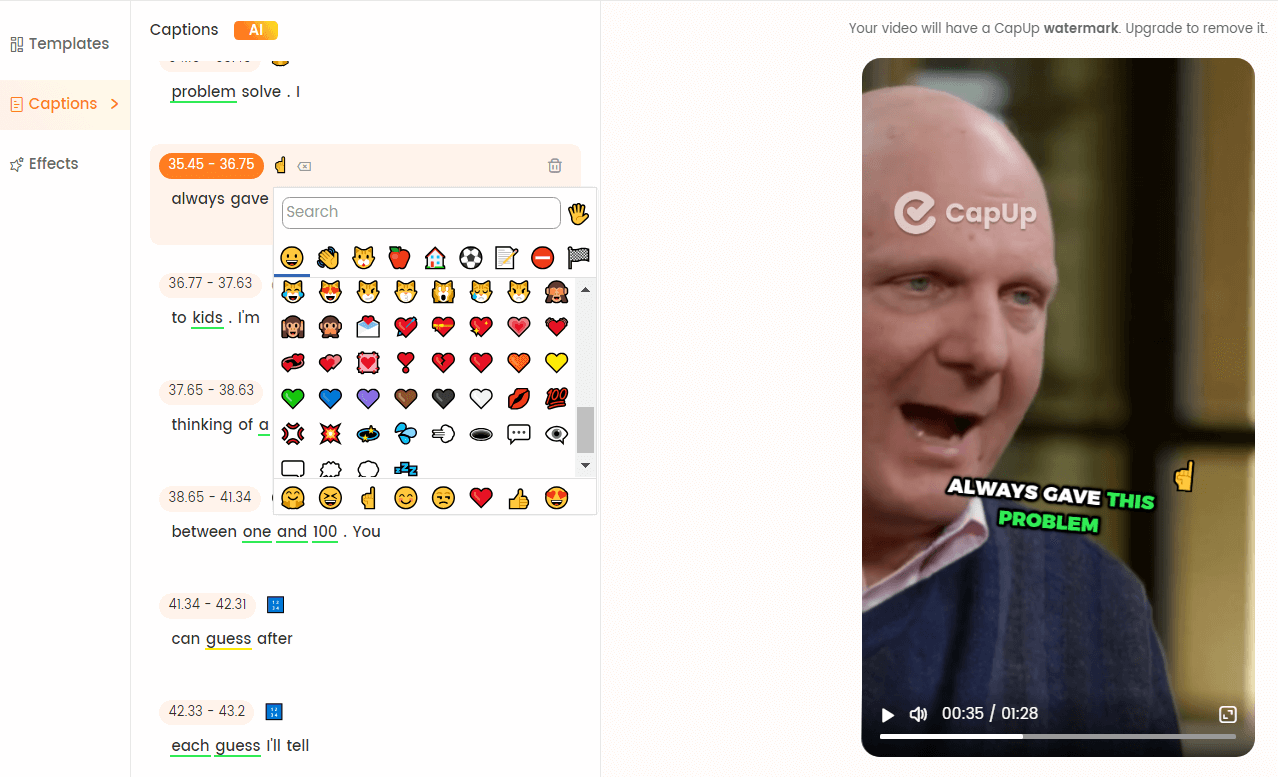
CapUp – Rich Emoji Resources
Step 6: You can also upload an attractive picture or select the most satisfying frame from your video to add a captivating cover to your video. Once satisfied, click on “Export” to export your video.
FAQs about Compressing Video for Facebook
1. Why do I need to compress videos for Facebook?
While uploading high-quality videos on Facebook may seem appealing, it comes with a price: excessive data usage and longer upload times. Moreover, Facebook imposes a size limit on videos, capping them at 4GB. Fortunately, you can address these concerns by compressing your videos, resulting in smoother and faster uploading experiences.
2. Will compressing videos decrease their quality?
Yes and no. You may be pondering whether compressing videos might deteriorate their quality. The answer is a bit of both. The act of video compression diminishes the file size and could, in turn, potentially degrade the quality of the video. However, fear not! By utilizing tools like HandBrake or FreeConvert, you can find a delicate balance between file size and quality, ensuring an optimal outcome that meets your preferences.
3. Can I compress videos for Facebook on my phone?
Absolutely! While this guide focuses on compressing videos on Windows and Mac or online, mobile apps also let you compress videos. However, the process might vary, and the options available could differ from a desktop or online tool.
Final Thought
We’ve just wrapped up our easy-to-follow guide on how to compress videos for Facebook. We genuinely hope it’s clarified the topic, removing any worries or questions you might’ve been grappling with. Remember, though tech may appear tricky or daunting initially, the right tools paired with some direction can simplify your journey.
We value your support and kindly request you pass this guide on to those who might find it beneficial. We’re receptive to all types of feedback, so please voice your thoughts. Do you have questions, experiences, or unique insights? Please leave them in the comment section. Your contribution is vital in enhancing our material to make it more pertinent. We aim for a smooth journey in video compression for everyone!

